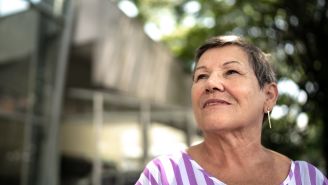Updated on November 27, 2023.
As huge swaths of society swapped in-real-life meetings for video interaction during the COVID-19 pandemic, the use of video platforms skyrocketed. Hundreds of millions of people signed onto services like Zoom, Google Meet, and Microsoft Teams.
There were and still are hiccups, ranging from bandwidth glitches, to login snafus, to rampant inadvertent muting ("Beth, we can't hear you!"). But video meetings have provided a way for workers, students, and family members to stay connected across distance.
Aside from the trivial annoyances, heavy users of videoconferencing have experienced one major downside: fatigue. If video meetings require such a light lift physically, why do they make you feel so wiped out after a virtual workday?
Videoconference fatigue (VCF), also known as “Zoom fatigue,” has hit women especially hard. In fact, women reported nearly 14 percent higher levels of Zoom fatigue, compared to men, according to findings published in April 2021 by researchers at Stanford University.
Much of the research into VCF has looked at subjective measures, that is, the way people describe their own experience. But one study published in October 2023 in Scientific Reports sought to measure the direct effects of videoconferencing on subjects’ brains and hearts. Researchers in Austria had university students attend lectures in person and via videoconference and tracked their brain and heart activity via electroencephalography (EEG) and electrocardiography (ECG).
As expected, the students reported that they felt more tired, drowsy, frustrated, and unhappy after attending the videoconference compared to the in-person version of the class. But significantly, EEG tests indicated that students’ brains were more fatigued on a neurological level as they struggled to pay attention to the videoconference version of the class. Heart rate measures recorded via ECG showed that the students’ physical fatigue built up over the course of the video lectures. During the in-person version of the class, on the other hand, they experienced reduced levels of strain.
Why are Zoom meetings so draining?
Think of a typical in-person meeting. Picture the conference room. When someone is presenting, what are you looking at? Most likely, your gaze wanders from the speaker to other participants, to the window, the floor, your notes.
Now picture your last video conference. You probably spent most of the time staring into the speaker’s face, monitoring their tone, pitch, and a variety of nonverbal cues. That attention requires subtle but substantial mental effort. Meanwhile, you’re obliged to perform the same way when you’re speaking: nodding, smiling, and looking into the camera to make eye contact.
Sending and receiving these signals in tight focus can be draining, physically and mentally, explains Jeremy Bailenson, PhD, founding director of Stanford University’s Virtual Human Interaction Lab and author of a February 2021 study in Technology, Mind, and Behavior on “nonverbal overload.” (He is also co-author of the April 2021 paper that looks at sex differences in Zoom fatigue.)
Aside from the cognitive strain of responding to and communicating with nonverbal cues, Bailenson identifies several aspects of Zooming that can zap your energy.
Intense close-ups
According to Bailenson’s research, you’d need to stand about 19 inches away from the person you’re speaking with to approximate the closeness simulated by a Zoom call. For context, personal space is typically defined as falling within the range of 18 inches of another person.
This means that when you’re on your team Zoom, you’re engaging with your coworkers at a distance usually reserved for intimate friends and loved ones.
And it’s not just that everyone feels closer to you. They’re also staring at you, which research shows can cause physiological arousal. Being in a prolonged state of arousal can trick your brain into thinking you’re in a situation that could lead to conflict—rather than a friendly morning check-in. Bailenson and his colleagues found that women reported higher levels of this sensation in their experiences with Zoom calls than men did.
Mirror effect
Another thing you’re likely not doing during an in-person meeting: staring at yourself. Imagine giving a presentation while someone holds a mirror in front of you. Not only would it be hard to concentrate, but you’d be spending mental energy toggling between listening and evaluating how you’re doing and how you look.
In this way, the self-view feature of many videoconference apps adds another layer of stress, which Bailenson and his colleagues describe as a form of “mirror anxiety.”
Locked in place
Video meetings can also have the effect of reducing your mobility. During an in-person meeting, you may get up to grab some water or draw on the whiteboard. On a phone call at home, you may pace your apartment or tend to chores like watering the plants.
While it’s acceptable to do these things on a call where people can’t see you, it’s less so on a video call because your absence from the frame is obvious. This can contribute to a feeling of being trapped in the virtual meeting space. Moving around throughout your day can help boost your energy; staying chained to your chair during a Zoom can be a drain. Bailenson’s research found higher levels of this feeling among women than among men.
How to reduce Zoom fatigue
Fortunately, there are some simple research-backed modifications you can make to your setup that may ease Zoom fatigue.
Hide yourself
For starters, Bailenson recommends turning off your self-view. Others will be able to see you, but you won’t be able to see yourself, which will stop you from worrying about your appearance.
“It will take a few days to get used to it, but you will feel better over time,” Bailenson says.
Keep things in perspective
The size of your video window also matters. Because closeups of faces can make it feel as though your personal space is being invaded, Bailenson recommends minimizing the video window so that it only takes up one-third of your computer screen.
Foster team spirit
According to Andrew Bennett, PhD, an associate professor in the department of management at Old Dominion University in Norfolk, Virginia and co-author of a 2021 study on VCF, the least draining meetings were the ones with the greatest sense of “group belongingness.” So, when feasible, allow time at the top of the meeting for participants to chat and get to know one another.
“Try to feel part of the group on the video meeting and help others feel that as well,” Bennett recommends. “The more connected people felt to others in that group, the less fatigued they felt afterwards.”
Time it right
If you’re the one setting up meetings, try scheduling video calls for earlier in the afternoon. “We know that people are more fatigued at the end of their work shift,” Bennett says. “And it seems that people are even more fatigued when they have a videoconference in the later part of the workday.”
Bennett and colleagues found that 1:30 p.m., or just after lunch, is an ideal time for video calls. Lunch breaks can help relieve fatigue, but they can also cause your attention to dip when you return to work. So, if you’re feeling a boost of energy after lunch, hopping on Zoom may not feel so draining. Meanwhile, the energy you need to muster through a video call may help smooth over any post-lunch productivity dips you’d otherwise feel.
Step out of the spotlight (when you can)
All in all, Bailenson recommends being mindful of how frequently you schedule video calls or how often you ask your employees to keep their video on. If you're the boss, remember that your employees don't have the same luxury you do to choose the amount of time they spend on camera.
“As a manager, I didn't realize this until my colleagues made it clear to me,” he says.
If you’re feeling tapped out, ask your manager if you can turn off your video occasionally or switch the meeting to a phone call to preserve your resources for the next Zoom.





